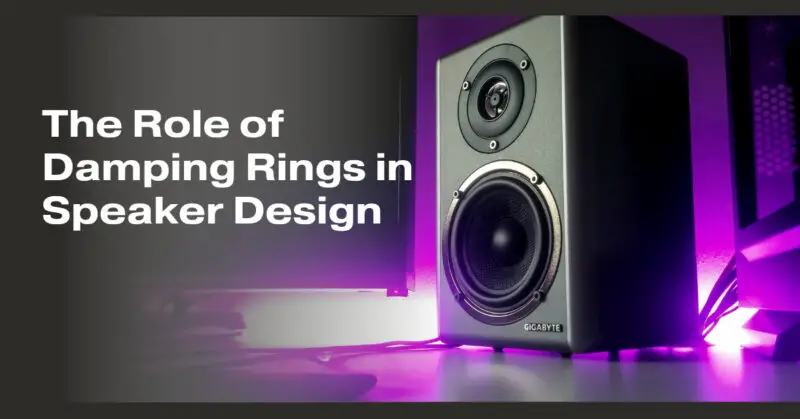When it comes to crafting high-quality speakers, every component plays a vital role in achieving optimal sound performance. One often-overlooked component that significantly influences a speaker’s sound quality is the damping ring. In this article, we’ll delve into the role of damping rings in speaker design and their impact on audio reproduction.
1. What Are Damping Rings?
Damping rings, also known as inner and outer surrounds or suspensions, are components found around the edge of a speaker’s diaphragm (cone) and connected to the speaker’s frame. They are typically made of various materials, including foam, fabric, rubber, or synthetic composites.
2. Controlling Diaphragm Motion:
The primary function of damping rings is to control the motion of the diaphragm, which includes the speaker cone and its associated components. Here’s how they achieve this:
- Reduction of Resonance: Damping rings help dampen or reduce unwanted resonances in the diaphragm. These resonances can color the sound by introducing distortion or unwanted vibrations.
- Improved Linearity: Damping rings contribute to the linearity of the diaphragm’s motion. A linear response means that the diaphragm moves precisely in response to the audio signal, resulting in accurate sound reproduction.
- Reduced Distortion: By controlling diaphragm motion, damping rings minimize distortion, ensuring that the speaker reproduces audio faithfully.
3. Types of Damping Rings:
Different types of damping rings are used in speaker design, each with its own characteristics:
- Foam Surrounds: Foam damping rings are lightweight and flexible. They provide good damping properties and are commonly used in midrange and woofer drivers.
- Rubber Surrounds: Rubber damping rings offer excellent durability and damping characteristics. They are often used in automotive speakers due to their resistance to environmental factors.
- Fabric Suspensions: Fabric damping rings are used in high-end speaker drivers. They are known for their ability to reduce unwanted resonances and distortions while maintaining flexibility.
- Composite Materials: Some advanced speakers use composite materials for damping rings, which combine various properties of foam, rubber, and fabric for optimal performance.
4. Impact on Sound Quality:
The quality and design of damping rings have a direct impact on a speaker’s sound quality:
- Reduced Coloration: Well-designed damping rings minimize the contribution of the diaphragm to sound coloration, ensuring that the speaker reproduces audio accurately.
- Improved Bass Response: Damping rings can enhance a speaker’s bass response by controlling the diaphragm’s excursion and minimizing distortion in low-frequency reproduction.
- Enhanced Clarity: By reducing unwanted resonances and distortions, damping rings contribute to the overall clarity and detail in audio reproduction.
- Extended Frequency Range: High-quality damping rings allow speakers to achieve a wider frequency range, ensuring that they can reproduce both low and high frequencies accurately.
5. Speaker Type and Application:
The choice of damping rings can vary depending on the speaker type and its intended application. High-end audiophile speakers may use advanced damping ring materials to achieve the highest level of sound quality, while automotive or outdoor speakers prioritize durability.
In conclusion, damping rings are a critical but often overlooked component in speaker design. They play a crucial role in controlling diaphragm motion, reducing resonances, and minimizing distortion, all of which contribute to accurate and high-quality sound reproduction. When evaluating speakers, it’s essential to consider the design and quality of damping rings as one of the many factors that impact a speaker’s overall performance and sonic characteristics.

